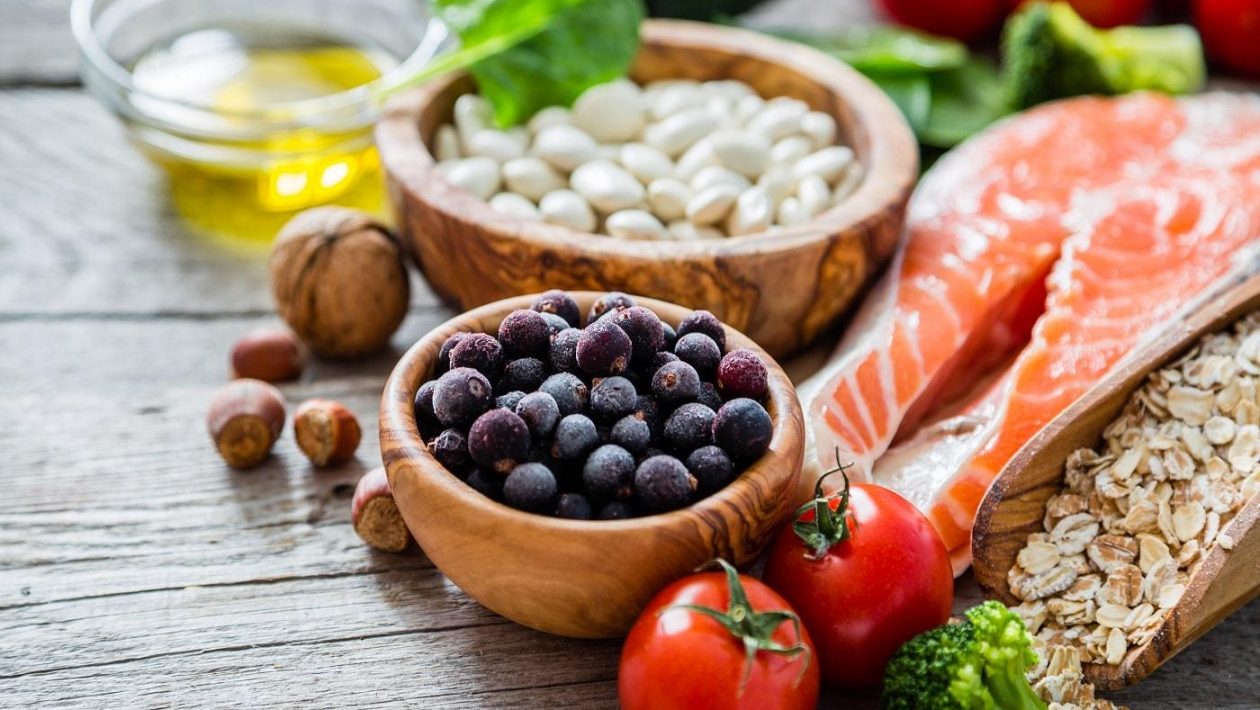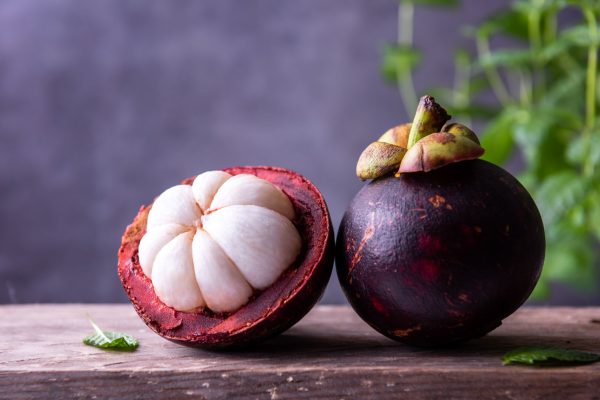Many people are now becoming vegetarians and start taking non-starchy vegetables because of the various health benefits of being vegetarian. These so-called benefits of being a vegetarian are now scientifically proven. The services are- Increases body strength, keeps skin alive, and does not leave the impression of age and retains the youth of the face.
Well-planned plant-based diets are rich in protein, iron, calcium, and other essential vitamins and minerals. Vegetables are low in harmful fats but high in dietary fiber. It also contains a lot of antioxidants. And these nutrients are very effective in preventing diseases like obesity, heart disease, diabetes, and cancer. And by reducing carbon emissions by stopping eating beef, one can also play a positive role in reducing global warming. The plant-based food system is the most sustainable food habit to keep the human species alive.
Non-starchy vegetables play an important role in meeting the daily nutritional needs of the body. Vegetables are rich in vitamins, minerals, and fiber for the body. In addition to boosting the body’s resistance to disease, these nutrient-rich vegetables also play a key role in aiding digestion, digestion, and digestion, converting carbohydrates and oils into calories (energy), increasing appetite and relieving constipation.
Different parts of the plant such as radish, stalk, leaf, flower, fruit, beech are all taken as vegetables. Vegetables are classified as follows according to the edible part of the plant.
Why are non-starchy vegetables important for a keto diet?
The ketogenic diet is the super low-carb diet. In this diet, the carb will be less at the extreme level, the fat will be much higher, and the protein will be at the mid-level. Typical ketogenic diets contain 5% of total caloric need carbs, 25% of protein, and 60% of fat. This means that the percentage of food in the amount of food you eat throughout the day. Our normal diet consists of 50% carbohydrates, 20% protein, and 30% fat. Suppose you eat 1200 calories throughout the day. Its 50% carb means you need to eat 600 calorie carbs.
Normally Starch-free vegetables include 0 grams of fat, 25-gram calories, 6 grams of carbohydrates, 0.5-2 grams of protein, and 3 grams of fiber. According to the research, non-starch vegetables contains these elements in per half-cup cooked or 1 cup fresh vegetables. Nonstarchy vegetables are known by low-calorie foods or low sugar foods. These types of vegetables usually add flavor, texture, wealthy color, and quantity of nutrition to any food. It’s better to intake none starchy vegetables daily to get a healthy life.
Categories of Non-Starchy Vegetables
- Sprouts
- Bean sprouts
- Brussels sprouts
- Artichoke
- Cauliflower
- Chayote
- Asparagus
- Broccoli
- Bamboo shoots
- Cabbage
- Beans (navy, black and white beans)
- Chicory
- Celery
- Carrots
- Cucumber
- Eggplant
- Dandelion
- Coleslaw
- Daikon
- Hearts of palm
- Hearts of artichoke
- Greens
- Salad greens
- Leeks
- Onions
- Kohlrabi
- Mustard greens
- Lettuce
- Jicama
- Okra
- Mushrooms
- Rutabaga
- Snow peas
- Peapods
- Sugar snap peas
- Peppers
- Squash
- Scallion
- Radishes
- Turnips
- Water chestnuts
- String beans
- Zucchini
- Swiss chard
- Tomato
The body needs the energy to survive. That is why we feel hungry and eat food. We like to eat foods that produce more energy. But due to overeating, body fat accumulates. Without sugar and sugar, the body will be forced to melt the accumulated fat and gather energy. The role of non-starchy vegetables in the Keto diet is very important. Weight loss will be followed by fatigue and constant tiredness.
By consuming non-starchy vegetables, we can achieve the required energy in the body without accumulating excess fat. If the bodyweight is normal then there is no need for a keto diet. Then you have to provide energy to the body by eating food.
Eating sugary and sweet foods increases the level of insulin in the blood. The function of insulin is to build up energy in the blood glucose cells to convert excess glucose into fat and to prevent the accumulation of accumulated body fat.
Eating sugary foods lowers blood glucose levels. As a result, insulin is secreted less, and the accumulated fat begins to melt. And doctors said to add more non-starchy vegetables to the food list. We get the necessary nutrition from non-starchy vegetables, which helps a lot in our keto diet.
Preparation of non-starchy vegetables
Use oil and a mince of garlic to seasoning your vegetables. When you chose oils, you may pick canola oil or olive oils. You can cook your vegetables in the stove or oven. When you prepare your none starchy vegetable in an oven, mix the vegetables with salt, oil, pepper, herbs(thyme, rosemary, oregano, basil, mint, etc.) and put them on the cookie sheet. You can also make a salad with these veggies to get more nutrition instead of cooking them because raw veggies contain more vitamins and minerals.
If fresh, seasonal fruits and vegetables are washed well and eaten raw, then your body will get various vitamins, minerals, and fiber. The higher the fiber in the diet, the lower the amount of LDL or harmful cholesterol. The stomach will be clean; gas-heartburn-heartburn will not be able to put a paw. The health of the skin and hair will be better. According to an article published by the Harvard School of Public Health, eating fruits and fresh vegetables every day is good for the heart and lowers blood pressure.
Also
In addition, when you eat salad, greens (lettuce, arugula, spinach, etc., vegetables, beans, capsicum, kale, avocado), turmeric (capsicum), oranges (carrots, oranges), red (bell pepper, beets, vegan, strawberries, tomatoes), Purple (cabbage, purple corn), etc., a combination of various natural colors are happening on your leaves. Each natural color has many properties; it also provides antioxidants to the body. Salad will help reduce inflammation in your body.
Don’t boil your vegetables to keep the vitamins. When you boil your veggies, it can spread the valuable vitamins into the water, and it may make them a glimpse. Also, don’t use a large amount of oil, butter, cream, salad dressings, or cheese to your vegetables as it can significantly increase the number of calories a low-calorie meal turns into high calories. Your doctor also will recommend putting salad on your daily diet because there are many benefits to eating salad every day with nonstarchy vegetables.
How to make a list of non-starchy vegetables in the Keto diet?
Many nutritionists have defined it in many ways. Everyone agrees, eat fat and protein instead of carbohydrates. There is a universally accepted formula. That is – 60% fat + 30% protein + 10% complex carbohydrates. The Keto Diet is a very effective fat loss diet. The fat is being targeted here. Fat is the stored energy of the body, which will help us to survive during famine. So we will use that fat as energy because we have eliminated carbs in Quito.
When fat is burned, you will have weight loss or fat loss because your fat cells are being burned in Kito. Protein is important here because when the body goes into ketosis, it can burn some muscle with fat so that the protein is kept so that it is not reduced. Now the question may come, what is the need to eat so much fat?
In the Keto diet, we eat mainly protein, protein alone cannot meet the daily calorie requirement. So we need fat to meet those calorie needs. It is good to know that there are 2.5 times more calories than fats, carbs, and proteins.
Can’t go for more calories or calorie deficit. Because then, your body will not function properly. That will no longer be a healthy diet. Only 20-30% of the total caloric need needs protein, and the rest needs to be met with 5% fat. In the Keto diet, we eat fat to burn fat.
There are four types of keto diet.
- Standard ketogenic diet: It contains 5% carbs, 25% protein, and 60% fat.
- Cyclic ketogenic diet: This carb can be eaten high carb twice a week.
- Targeted ketogenic diet: This keto contains carbs before or after a workout.
- High Protein Keto Diet: Much like the standard keto diet, only protein increases from 25% to 35%. It contains 60% fat, 35% protein and 5% fat. Bodybuilders or athletes do it.
In keto diet which food you can’t eat:
- Exclude anything sugary or sweet. Coke, fruit juice, cake, ice cream, chocolate, smoothie, any kind of sweet.
- Anything made of flour, rice, pasta, noodles, oats, corn flakes are all excluded.
- Prohibits all kinds of fruits.
- All types of pulses are prohibited, pulses contain a good amount of protein as well as carbs.
- also, Exclude all underground vegetables such as potatoes, radishes, carrots, ketchup.
- Exclude any type of processed food.
Non-starchy vegetables with fiber
on the other hand, Non-starchy vegetables with fibers are spinach, sweet potato, mint leaves, radish spinach, stalk spinach, pumpkin, and sweet pumpkin are rich in fiber. Vegetables – The most fibrous vegetables include banana peel, potato, cabbage, cauliflower, carrot, bean, brinjal, and peas. Fruits- The most fibrous fruits are guava, pumpkin, mango, coconut, blackberry. In addition, ripe tomatoes, ripe mangoes, ripe jackfruits, apples, and mangoes contain moderate amounts of fiber. Pulses- Peas, mugs, and gram pulses have the highest fiber content. Other- Barley, Maize, Flour, Sesame, Green Pepper and Mustard also contain a significant amount of fiber.
“Everyone should increase their dietary fiber intake to reduce the risk of premature death,” said Yang Yang, a researcher at the Shanghai Cancer Institute in China, in the American Journal of Epidemiology. Researcher Young’s team divided into five groups and conducted research on about 972,411 women and men. They found that people who put more fiber into their diet each day were about 18% less likely to die than others. They also found in another study that those who increased their intake of just 10 grams of fiber had a 10% lower risk of death. According to the US Department of Agriculture,
Most Important parts
an adult male needs 36 grams of fiber per day, and an adult woman needs 25 grams of fiber per day. But in underdeveloped or semi-developed countries, the average intake of this fiber by men and women is quite low. Due to which many men and women die prematurely every year due to various long term diseases such as heart disease, cardiovascular disease, cancer, etc.
Victoria Burley, a nutritionist at the University of Leeds, UK, said: “Eating a high-fiber diet every day lowers blood cholesterol, controls high blood pressure, regulates blood glucose levels and insulin, and is an inflammatory problem reduces’.In addition, high-fiber foods can reduce appetite by eating small amounts and often do not stimulate hunger, which has an effect on our weight. In other words, in addition to eliminating diseases, fiber-rich foods also help us to control our weight.
FAQ
- Which vegetables are nonstarchy?
Nonstarchy vegetables are:
- Sprouts
- Bean sprouts
- Brussels sprouts
- Artichoke
- Cauliflower
- Chayote
- Asparagus
- Broccoli
- Bamboo shoots
- Cabbage
- Beans (navy, black and white beans)
- Chicory
- Celery
- Carrots
- Cucumber
- Eggplant
- Dandelion
- Coleslaw
- Daikon
- Hearts of palm
- Hearts of artichoke
- Greens
- Salad greens
- Leeks
- Onions
- Kohlrabi
- Mustard greens
- Lettuce
- Jicama
- Okra
- Mushrooms
- Rutabaga
- Snow peas
- Peapods
- Sugar snap peas
- Peppers
- Squash
- Scallion
- Radishes
- Turnips
- Water chestnuts
- String beans
- Zucchini
- Swiss chard
- Tomato
- How to make a salad with nonstarchy veggies for the keto diet?
For preparing for salad take greens (lettuce, spinach, etc., vegetables, beans, capsicum, kale, avocado), turmeric (capsicum), oranges (carrots, oranges), red (bell pepper, beets, vegan, strawberries, tomatoes), Purple (cabbage, purple corn), etc. Don’t boil your vegetables to keep the vitamins.
- Do nonstarchy vegetables contain fiber?
Yes, the nonstarchy vegetables with fibers are spinach, sweet potato, mint leaves, radish spinach, stalk spinach, pumpkin, and sweet pumpkin are rich in fiber. Vegetables – The most fibrous vegetables include banana peel, potato, cabbage, cauliflower, carrot, bean, brinjal, and peas. Fruits- The most fibrous fruits are guava, pumpkin, mango, coconut, blackberry.
- What do the nonstarchy vegetables contain?
Normally Starch-free vegetables include 0 grams of fat, 25-gram calories, 6 grams of carbohydrates, 0.5-2 grams of protein, and 3 grams of fiber. According to the research, non-starchy vegetables contain these elements per half-cup cooked or 1 cup of fresh vegetables.





